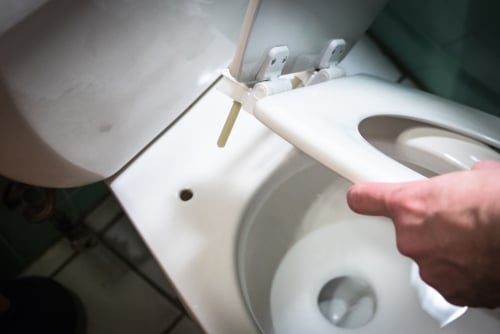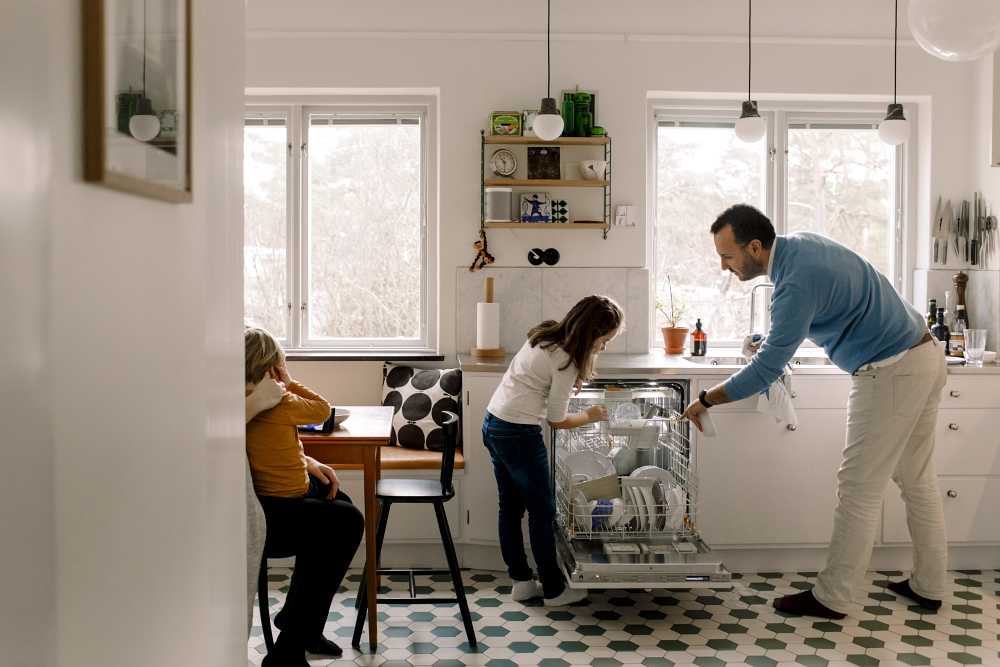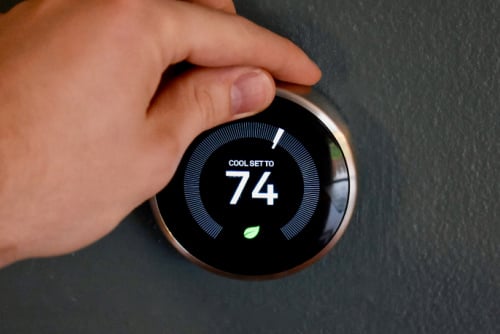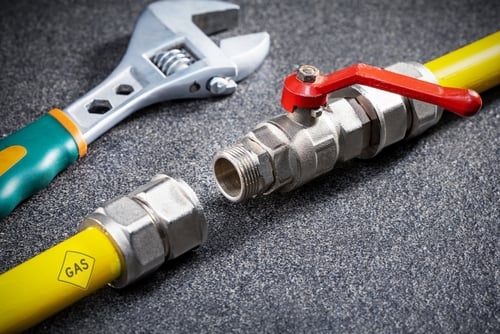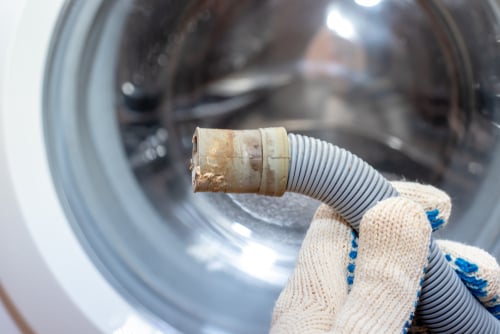Going to the bathroom shouldn’t be a thrill ride. Sit tight and we’ll walk you through the nuts & bolts of toilet seat repair.
A loose toilet seat can slide around while you’re sitting on it, which is a real bummer—not to mention potentially dangerous. It’s a common problem that happens over time—think of how often your family opens, closes and sits on it.
If you or someone in your house tends to lean forward while using the toilet, the back of the toilet seat can rise, which in turn, can cause loose toilet bolts. A less likely culprit is worn-out hinges around the toilet seat bolts, which keep the bolts from fitting properly. If that’s the case, you’ll need to replace the hinges. If they’re attached to the seat, you’ll need to swap that out, too.
You may want to call a family meeting about toilet posture, but first let us walk you through this very simple DIY project before somebody gets hurt.
How to tighten toilet bolts.
What you’ll definitely need for tightening toilet bolts:
- A slotted screwdriver
What you might need for tightening toilet bolts:
- Pliers
- Adjustable wrench
- Ratchet wrench with a deep socket
- Hacksaw blade
How to fix a wobbly toilet in two simple steps.
Number one: Locate the bolts.
Your loose toilet bolts probably have plastic flaps that snaps to cover them. With your screwdriver, pry those covers open—gently, so they don’t snap off—to expose the bolts that hold the seat to the top of the bowl.
Number two: Tighten them down.
If the bolts have slotted heads, turn them clockwise with your screwdriver till they’re tight. To make sure the seat sits level, be sure to tighten the bolts evenly.
If the bolt spins but doesn’t tighten, grab your pliers and grip the nut that’s threaded onto the mounting bolt from below the toilet as you’re tightening the toilet bolts with your screwdriver. The screws are probably steel, but in case they’re plastic, be careful not to break them or strip the threads. Don’t over-tighten the bolts or you could end up cracking the toilet.
You may also be able to tighten the mounting nuts from underneath the bowl. Turn them clockwise till they’re snug using a ratchet wrench with a deep socket or an adjustable wrench.
Replace the bolts.
If you can’t tighten the bolts, or you end up breaking them trying, you’ll find replacements at your local hardware or home improvement store. If one or both bolts are stuck, you may need to cut them off with a hacksaw blade. Either use just the blade or buy a mini hacksaw so you can cut under the head of the bolt.
There’s a kit for that.
Toilet seats that wiggle and wobble are common enough that there are several kits for taking care of loose toilet bolts. The kits include rubbers washers to put under the bolts and a small specialty wrench that fits most mounting nuts. Remove the nuts from the mounting bolts and place the washers onto the bolts from underneath the bowl. Loosely thread the nuts back onto the bolts. Line the seat up evenly, then hand-tighten the nuts. Give them another quarter-turn with the specialty tool and you’re good to go.
When should you replace your toilet seats.
Your toilet seat should last a good decade, depending on the material it’s made of and how often it’s used. Padded seats generally don’t hold up as well as plastic or wood. Make sure you measure the seat you’re replacing, as well as the overall dimensions of the toilet bowl without the seat. You’ll want to buy the same shape you have—round or elongated. For the best fit, pick a seat that’s the same make as the toilet. If the seat you’re replacing is a specialty size or shape, you’ll need to contact the manufacturer.
And once you put the new seat in position, it’s a good idea test it out to make sure it’s properly aligned before tightening toilet bolts.
The bottom line: Toilet seat repair is a simple DIY job—as long as you follow the steps carefully.
At Frontdoor®, we know you love getting things done around the house. Staying in control of your to-do list is easier when you can keep the small things from turning into bigger—and more expensive—ones. We’re here to make it easier to prevent problems instead of reacting to them.
Was this article helpful?
